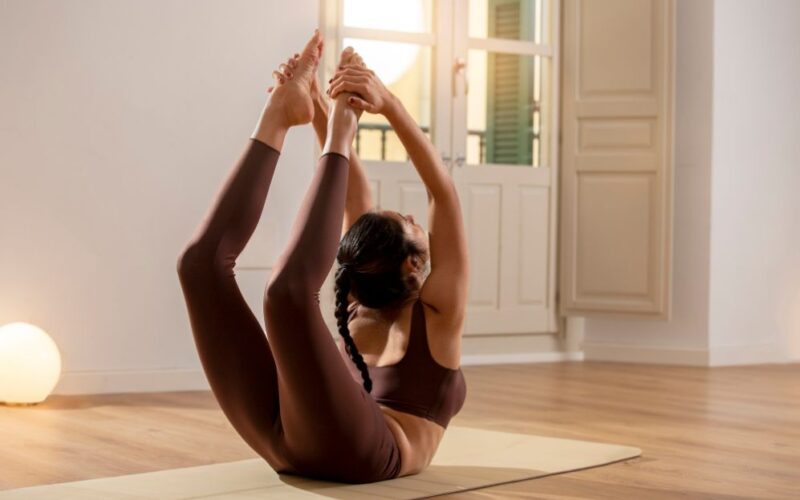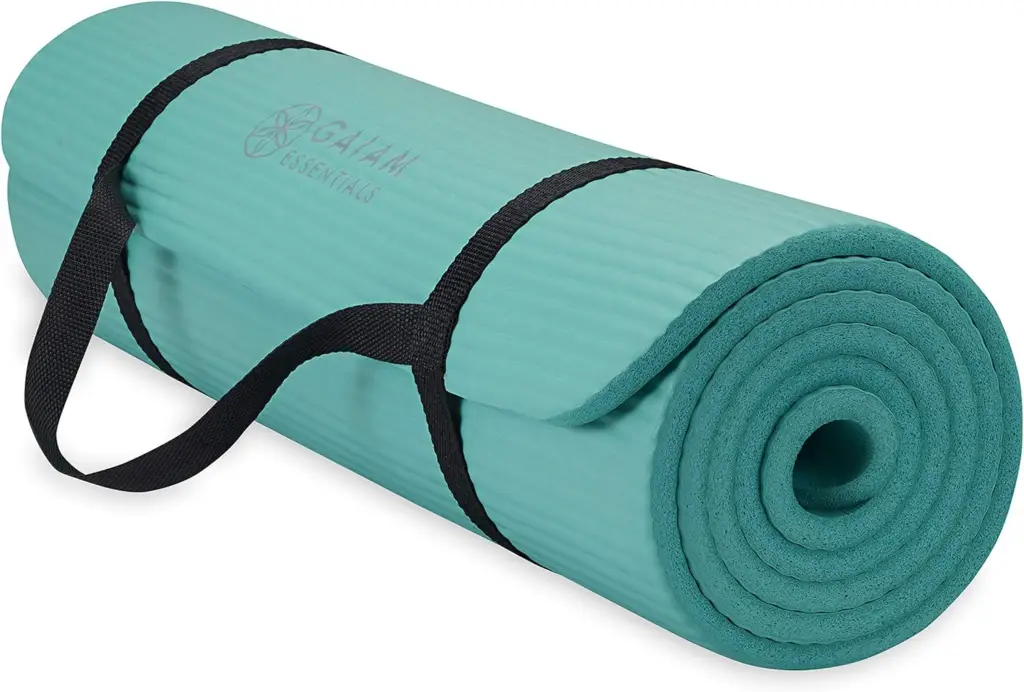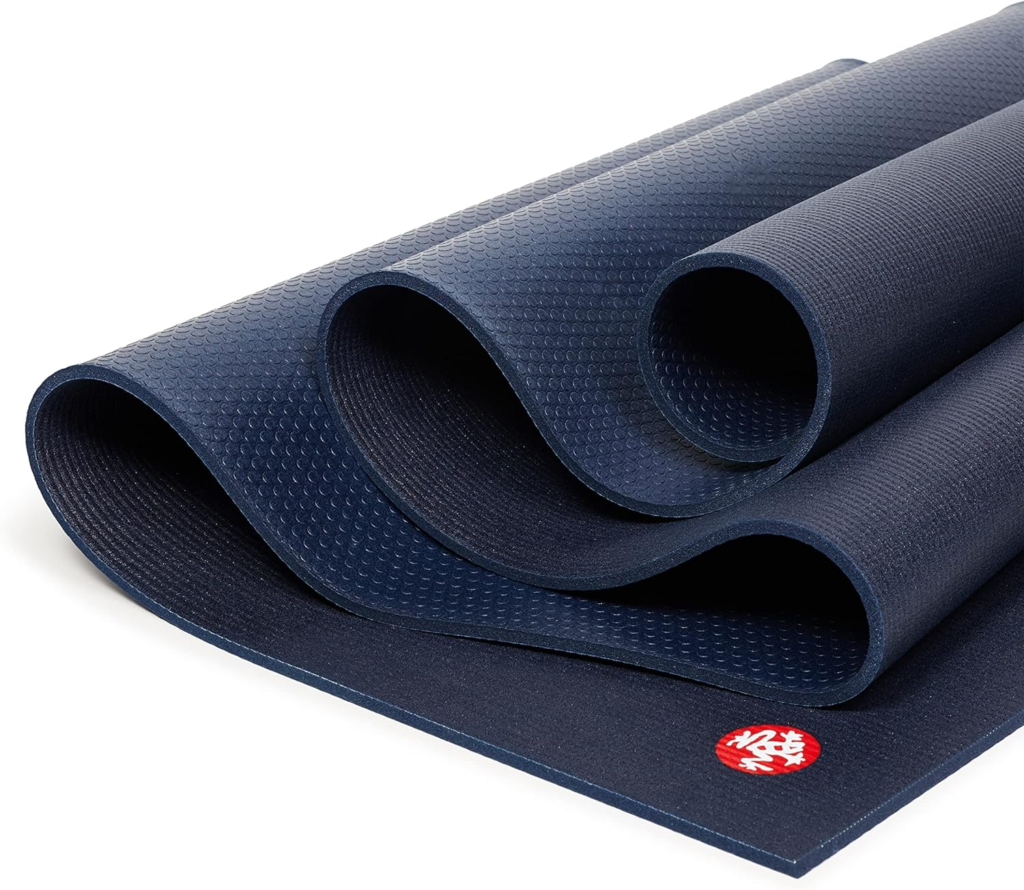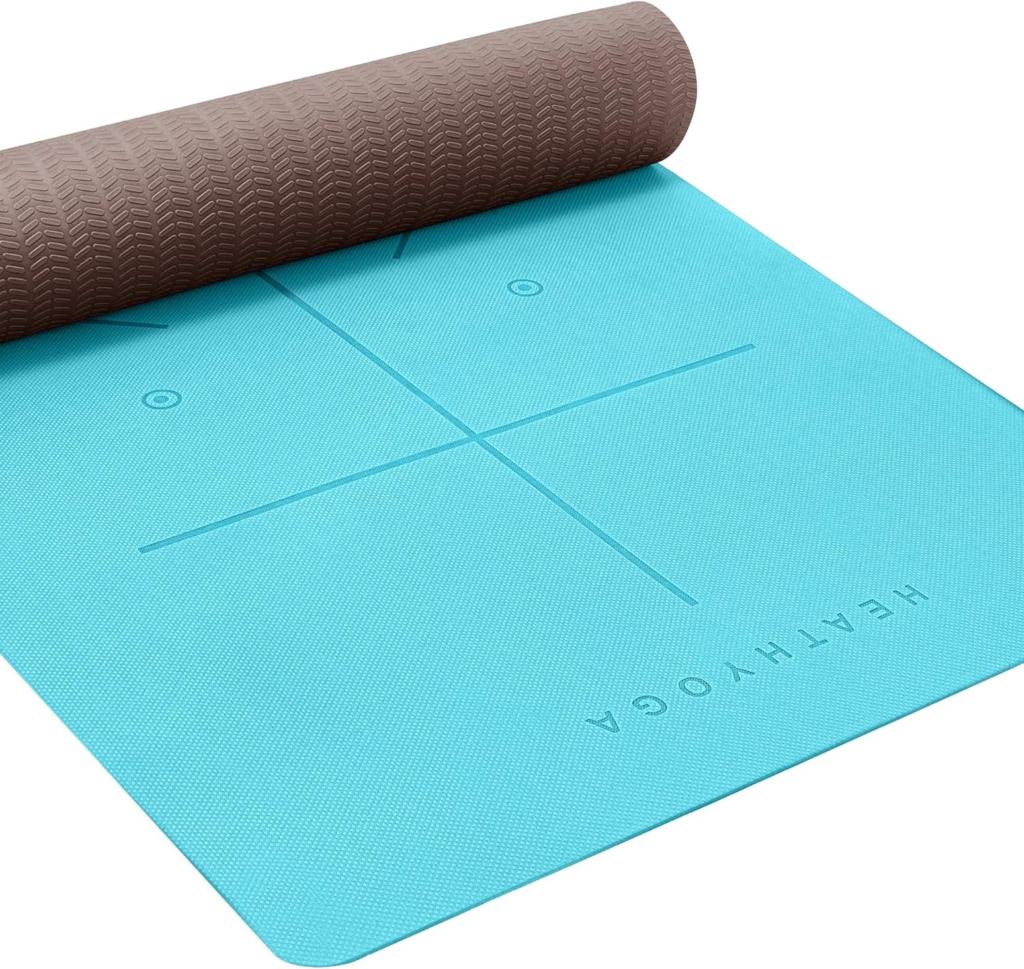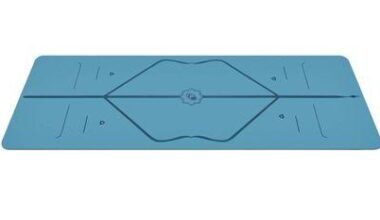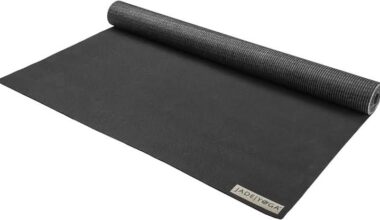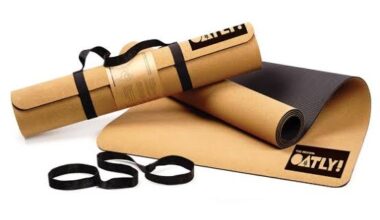Table of Contents Show
Discover the best yoga mat for Ashtanga yoga in this comprehensive guide. Learn about the characteristics of an ideal Ashtanga yoga mat, review popular options, and find the perfect mat for your practice.
Ah, Ashtanga yoga, the sweat-drenching, body-strengthening, mind-calming practice that has taken the world by storm. Whether you are a seasoned Ashtanga practitioner or just starting on this invigorating journey, one thing is certain: you need the best yoga mat for Ashtanga.
Disclosure: As an Amazon Associate I earn from qualifying purchases.
Why? Because Ashtanga yoga involves a series of challenging poses that require a strong grip, support, and durability from your yoga mat. A slip here or a slide there can not only interrupt your flow but also lead to injuries. And let’s face it, nobody wants to faceplant while trying to master the art of balance and flexibility.
So, what is the best yoga mat for Ashtanga?
Crafting the Criteria: What Makes the Best Yoga Mat for Ashtanga?
Are all yoga mats created equal? Spoiler alert: No. But what are the parameters that shift a mat from the “nah” pile to the “a-ha” pile?
- Durability: Ashtanga yoga involves a lot of movement, so you need a mat that can withstand the wear and tear of daily practice. Look for a mat made of high-quality, durable materials, such as natural rubber or PVC.
- Grip: As mentioned before, grip is essential for Ashtanga yoga. Your hands and feet should be able to stick to the mat even when they are sweaty. A mat with a textured surface can also help to provide extra grip.
- Thickness: The thickness of your yoga mat is essential for providing cushioning to your joints. However, it’s important to find the right balance. A mat that is too thick can make it harder to balance, while a mat that is too thin may not provide enough cushioning. A thickness of around 5mm is generally recommended for Ashtanga yoga.
- Size: Make sure the mat is large enough for your body and the postures you will be practicing. Standard yoga mats are about 68 inches long and 24 inches wide, but if you are taller or prefer more space, you might want to consider a larger mat.
- Material: The material of your yoga mat can affect its grip, durability, and eco-friendliness. Natural rubber is a popular material for yoga mats as it provides good grip and durability while being eco-friendly. PVC is another common material, but it is less eco-friendly.
- Alignment Lines: Some yoga mats come with alignment lines, which can be helpful for maintaining proper alignment during your practice.
- Extra Features: Alignment lines? A travel-friendly fold? Yes, please!
Now that we’ve got our checklist, let’s move on to the meaty bits: the top contenders for the best yoga mat for Ashtanga.
Top Picks for the Best Yoga Mat for Ashtanga
The Heavyweight Champion: Manduka PRO Yoga Mat
Who could overlook the almighty Manduka PRO? It’s like the Roger Federer of yoga mats, isn’t it? Recommended by practitioners who are on the mat six times a week practicing Mysore-style Ashtanga, this mat has a reputation that precedes itself. With a lifetime guarantee, it has charmed its way into the hearts of yogis worldwide12.
Why should you care?
- High durability
- Comes with a lifetime guarantee
- Grip improves with use
Who knew a mat could promise to be with you ’til your last vinyasa?
The Innovator: Liforme Yoga Mat
Ever tried to adjust your Warrior I alignment while dripping sweat? Liforme comes to the rescue with alignment lines, excellent grip, and even a travel-friendly version13. It’s like the Apple iPhone of yoga mats; constantly innovating and always useful.
Why should you care?
- Grip, grip, and more grip
- Alignment lines for the win
- Travel-friendly option available
The Organic Maven: Natural Cotton Yoga Rug
Who said yoga mats have to be made from rubber or foam? Meet the natural cotton yoga rug, the bohemian cousin in the family of yoga mats4.
Why should you care?
- Earth-friendly
- Soft on the skin
- Doubles as a home décor item
The Underdog: Yoga Design Lab Mat

Found lurking in the comments section of Reddit, the Yoga Design Lab mat comes with a “made for sweaty vinyasa” seal of approval5.
Why should you care?
- Sweat-friendly
- Aesthetically pleasing
- Not too heavy on the pocket
Heathyoga Rubber Yoga Mat
This mat is made of natural rubber and has a double-sided surface that provides an unbeatable wet grip. It is also non-toxic, odorless, and eco-friendly[3].
Jade Yoga Elite S Mat
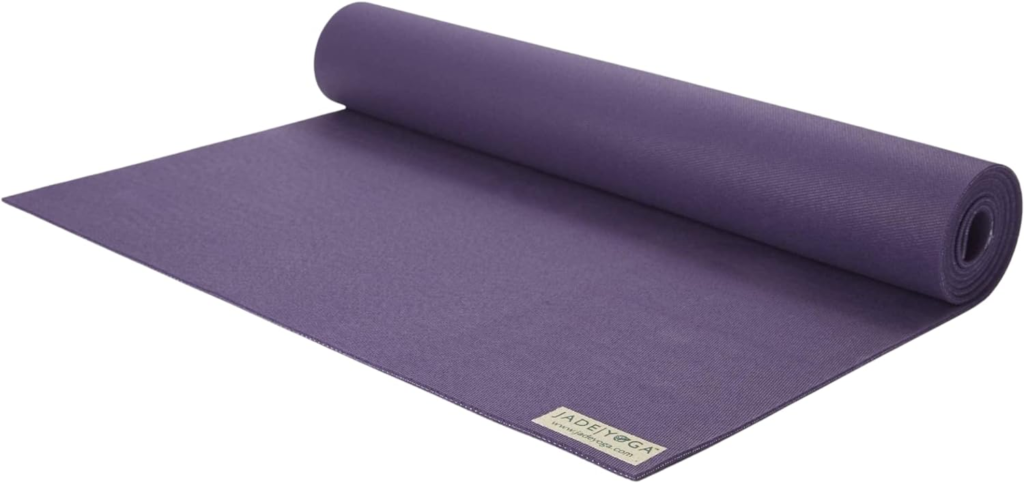
This mat is designed for those with a vigorous practice. It is made of natural rubber, which provides excellent grip and cushioning. It is also eco-friendly as Jade Yoga plants a tree for every mat sold
The Showdown: Side-by-Side Comparison
| Features | Manduka PRO | Liforme | Natural Cotton Rug | Yoga Design Lab |
|---|---|---|---|---|
| Grip | Excellent | Superior | Good | Good |
| Durability | Lifetime | High | Moderate | Moderate |
| Material | PVC | Rubber | Cotton | Microfiber |
| Extra Features | None | Alignment Lines | Aesthetic | Sweat-friendly |
The Soul-Searching Conclusion
In a world flooded with yoga mat options, choosing the best yoga mat for Ashtanga can feel like finding a needle in a haystack. But hey, now you’re armed with all the knowledge you need to make an informed decision. When choosing a mat, consider its durability, grip, thickness, size, material, and whether it has alignment lines. Some popular options among Ashtanga practitioners include the Manduka PRO Yoga Mat, Liforme Yoga Mat, Natural Cotton Yoga Rug, Heathyoga Rubber Yoga Mat, and Jade Yoga Elite S Mat.
Ultimately, the best yoga mat for Ashtanga yoga depends on your personal preferences and needs. It’s advisable to try a few different mats, if possible, to find the one that suits you best.
You May Also Like: Ashtanga Yoga Certification: Your Ultimate Guide to a Deeply Rewarding Journey
Frequently Asked Questions
Q1. Can I use a regular yoga mat for Ashtanga yoga?
A: Yes, you can use a regular yoga mat for Ashtanga yoga. However, due to the dynamic and intense nature of Ashtanga yoga, it is recommended to use a mat that provides excellent grip, cushioning, and durability.
Q2. What is the best thickness for an Ashtanga yoga mat?
A: A thickness of around 5mm is generally recommended for Ashtanga yoga. This provides enough cushioning for your joints while still allowing you to maintain balance.
Q3. Do I need a yoga mat with alignment lines for Ashtanga yoga?
A: Alignment lines can be helpful for maintaining proper alignment during your practice. However, they are not necessary. Many Ashtanga practitioners prefer a plain mat without any markings.
Q4. How often should I replace my yoga mat?
A: The lifespan of a yoga mat depends on the quality of the mat and how often it is used. A high-quality mat used daily may last anywhere from 6 months to a few years. It’s time to replace your mat when it starts to show signs of wear, such as thinning, flaking, or loss of grip.
Q5. Is a natural rubber yoga mat better than a PVC mat?
A: Natural rubber yoga mats provide excellent grip and cushioning, and they are eco-friendly. PVC mats are also durable and provide good grip, but they are less eco-friendly. Ultimately, the choice between natural rubber and PVC depends on your personal preferences and values.
Q6. Is it necessary to have alignment markings on my Ashtanga yoga mat?
A: Alignment markings can be helpful for maintaining proper alignment during your practice. However, they are not necessary, and some practitioners prefer a plain mat. It’s a matter of personal preference.
Q7. Can I use a towel on top of my Ashtanga yoga mat?
A: Yes, using a towel on top of your yoga mat can help to absorb sweat and provide extra grip. However, it’s important to make sure that the towel doesn’t move around during your practice. Some yoga towels have silicone dots on the bottom to help them stick to the mat.
Q8. What are the dimensions of a standard Ashtanga yoga mat?
A: The standard dimensions of a yoga mat are 24 inches wide and 68 inches long. However, many Ashtanga practitioners prefer a longer mat, around 71 to 74 inches, to accommodate the full range of movements.
You May Also Like:
